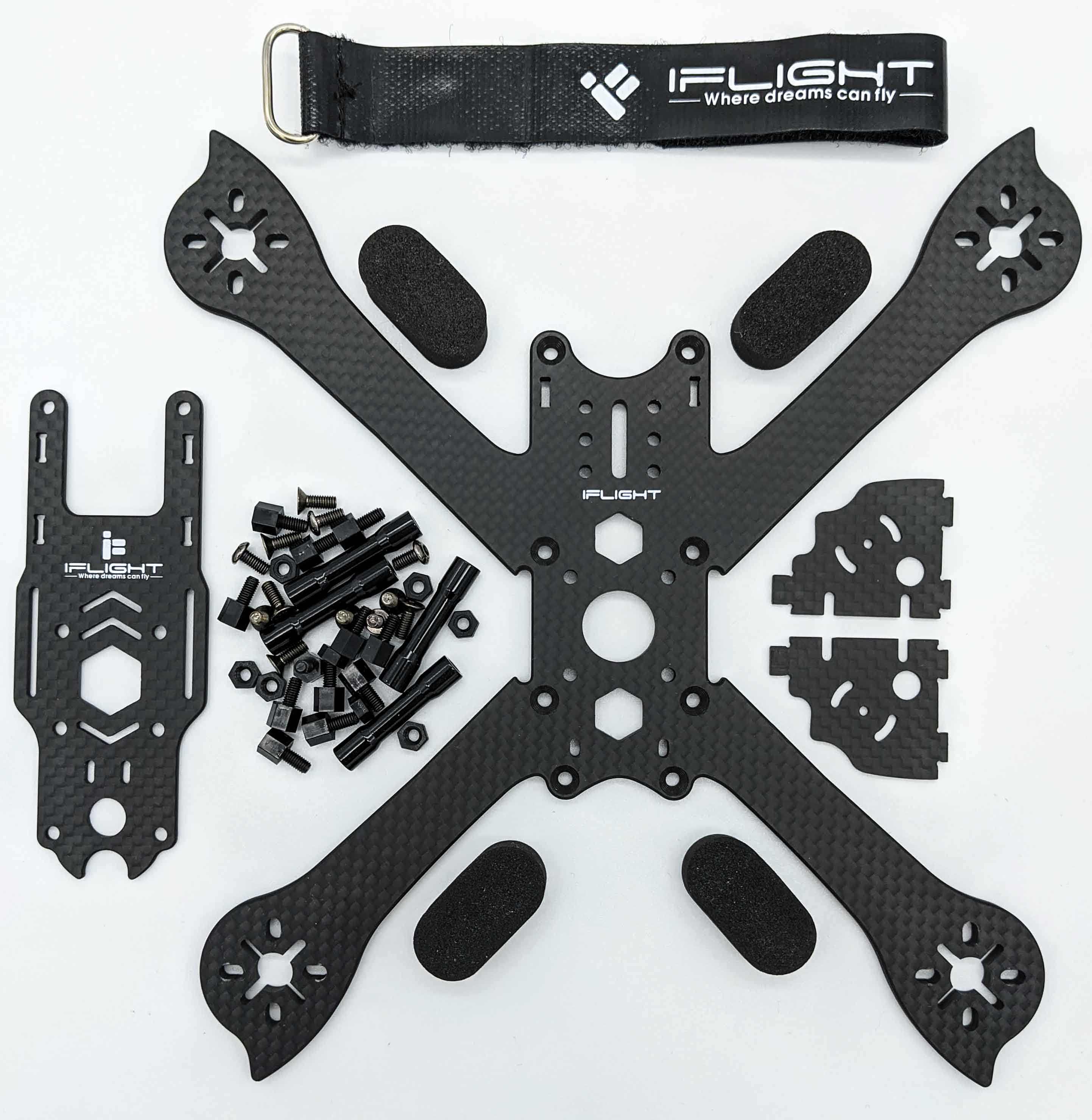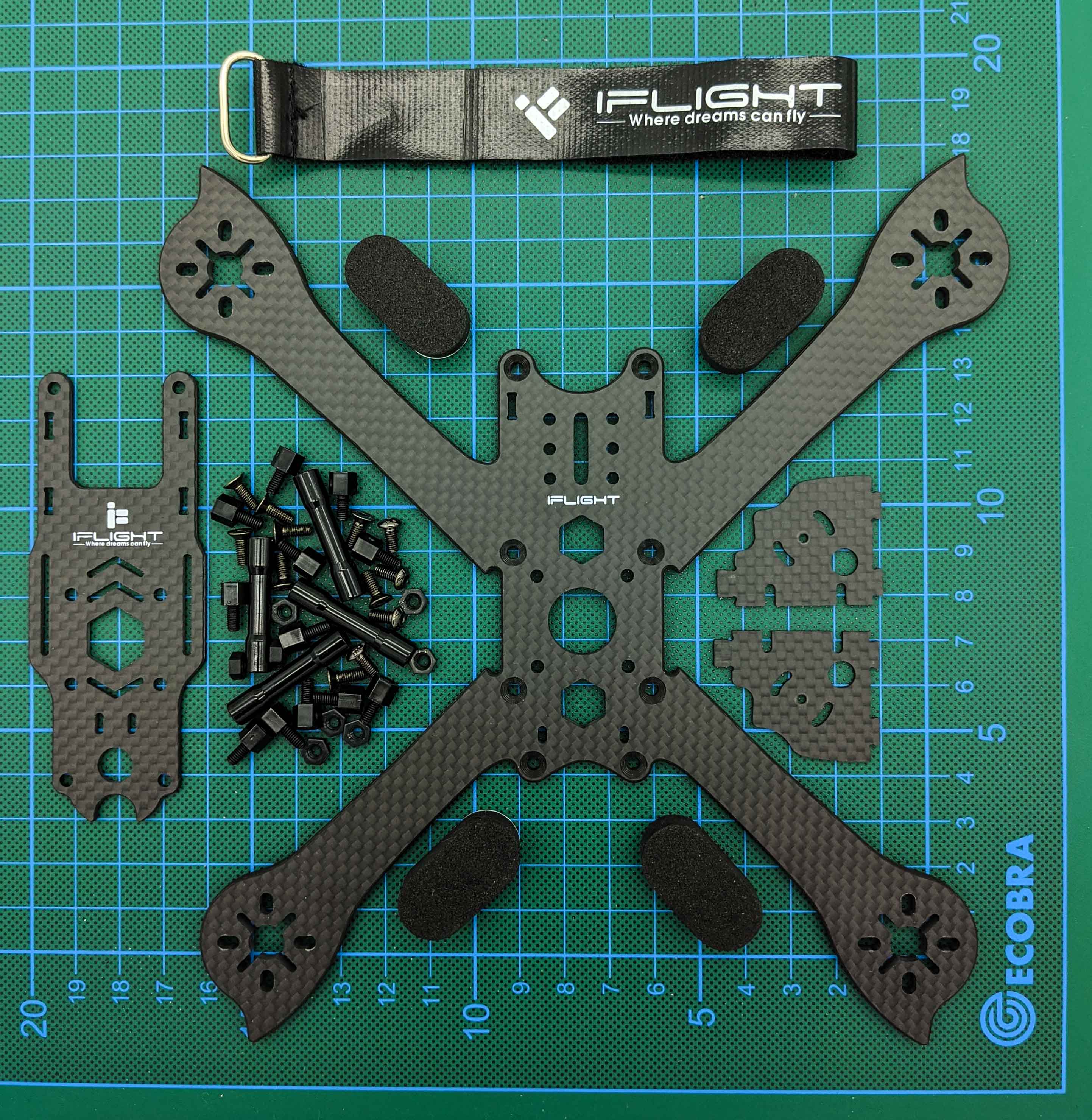The frame of a race drone is not only important to house all the individual components of a drone, its aerodynamics play a significant role for speed and flight stability.
Frame Composition
For multicopters many frames exist, that are made up of different pieces and are assembled differently. Most larger drones commonly consist of a centerplate as their core, arms also known as booms, that hold motors at their ends, and the landing gear. Depending on the size of the motors, dedicated motor mounts are used at the booms to fix the motors. In the field of FPV race quad frames consist of a single centerplate which includes the arms. This means no weaknesses due to screw connections and a lighter frame.


Nevertheless additional parts exist that are attached to the centerplate, such as mounting constructions and cover plates including screws and distance bolts. These parts are required for the other essential components such as the Flightcontroller, battery or FPV-camer. With these mounting material the parts are kept at specific frame locations and are protected from a possible crash.
Materials
During a flight a FPV frame needs to withstand heavy strain and high g-forces. Because of this most permium frames consist of an extremely light and stable carbon fiber reinforced polymer, also known as CFK.
This material combines specific attributes that are required in aviation and airplane construction. Compared to other materials, CFK stands out with high stability while at the same time providing low weight. The material density specifies how much a material weights with respect to a specific volume. The tensil strength denotes the capacity of a material or structure to withstand loads tending to elongate. Young’s modulus is a mechanical property in the linear elasticity regime that measures the stiffness of a solid material.
Frame Size and Application Purpose
The size of a frame construction influences the flight characteristics of a drone. One common metric is the center distance, which is the distance between one motor center point (motor shaft) to a diagonally opposite motor center point. This means that the diagonal motor-to-motor distance of a 200 frame is 200mm.
Up to a certain limit, larger frames provide more stable flight characteristics. A smaller frame is used to fly faster, where common frame sizes are between 100mm to 300mm for race drones and acrobatic flights. Frames can also be categorized into micro and mini. Frames less than 150mm are considered micro frames and frames above 150mm are known as mini frames.
Further reading material
All about multirotor fpv drone frames at GetFPV learning pages.
Comments